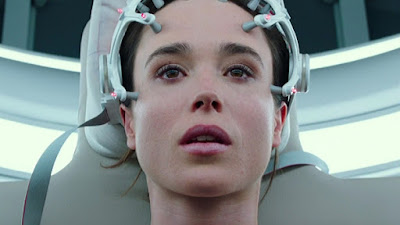Both Ends of the Spectrum: 'The Death of Mr. Lazarescu'
 |
By David Eng |
This column is going to focus on the two main categories.
The first will be foreign films and the second will be cartoons. I find many
people find these two categories to be quite daunting to try and get acquainted
with due to the obscurity of foreign films along with the social stigma of
adults watching cartoons. These two forms of media many people consider to have
nothing much in common, but they are somewhat similar. They suffer from the
same problem where they are discriminated against for unreasonable reasons and
I hope that my column will provide proof that these media forms have the
potential to be enjoyed by all. The column is planned to be weekly and have the
subject alternate between the two each week.
For my
first article I will be writing about the Romanian film The Death of Mr. Lazarescu. This lovely film is directed and
written by Cristi Puiu and runs a whopping 153 minutes. The movie should be
classified as a minimalist comedy as it utilizes a somber color scheme while
being extremely repetitive. Repetition should not be taken as a negative
comment as the long winded narrative is crucial to the message the film is
trying to make. Our protagonist of the movie is Mr. Lazarescu, played by Ion
Fiscuteanu, and he plays an elderly Romanian man who is becoming ill and
requires medical attention. The real adventure starts when he is whisked away
from his home by a nurse who will take him to a hospital for treatment. As the
night progresses, Mr. Lazarescu's condition slowly deteriorates. Saying more
than this will spoil parts of the movie which is something I would like to
avoid.
The film's
cinematography is intricate despite the lack of action in the film itself. Many
shots are filmed in such a way to make the camera seem to be a character of its
own. This technique helps to have the audience feel engaged in what is
happening. One scene in particular is when Mr. Lazrescu is on the stretcher in
the back of the ambulance. The camera is in a stagnant position and follows Mr.
Lazarescu's conversation with the drivers. Along with this, the camera feels
every bump of the road and jars accordingly. The build up of the scene makes us
as the audience feel nauseous because of these effects. The scene's climax is
Mr. Lazarescu vomiting showing that he is nauseous just like the audience. This
type of cinematography is not during a particular important scene, but shows
just how much thought went into the making of the film.
Suggesting
this movie to people is a bit of a tall order. The movie runs extremely long
and there lacks much action. The real enjoyment comes from the comedy that the
camera presents. The scenes themselves may not be terribly funny, but the
repetition followed by the unmotivated camera movement makes for some very
comedic moments. The term unmotivated camera movement refers to scenes where
the camera is no longer interested in our protagonist and switches focuses to
seemingly more interesting content. This creates moments of humor where instead
of helping our dying hero, we hear about someones unrelated love interest or
the bus crash that happened recently. This film should be recommended for those
who can appreciate small but very tight cinematography. There are many more
examples than the scene posed in the last paragraph. I would also recommend
this movie to those who understand and have experienced the minimalist style of
film making. The movie is a good minimalist film, but I would not recommend it
as the first minimalist film to watch. It can get brutal in its pacing at times
and it is overall a bit boring as there is no clear action or plot. The film
exemplifies a pure form of minimalism that some people cannot handle.
Overall,
the film is memorable for the oddities that it displays. One must be patient
with the film because while it has dry comedy throughout, it also exemplifies
extreme political messages that Puiu is trying to get across. The minimalist
atmosphere and the drawn out narrative are all important aspects of Puiu's
overall message. Saying the message would also be a spoiler as one would have
to know the ending to fully try and pick apart what Puiu is trying to portray.
To conclude this article, I would give the movie 7/10 based on the
intricacies of the cinematography along with the satiric and dark style of
humor. The story may lack a very interesting plot and as mentions many times,
is exceedingly repetitive. The film's niche is in the way it takes an
uninteresting plot and performs some sort of cinematographic alchemy to
transform it into a gripping narrative.



Comments
Post a Comment